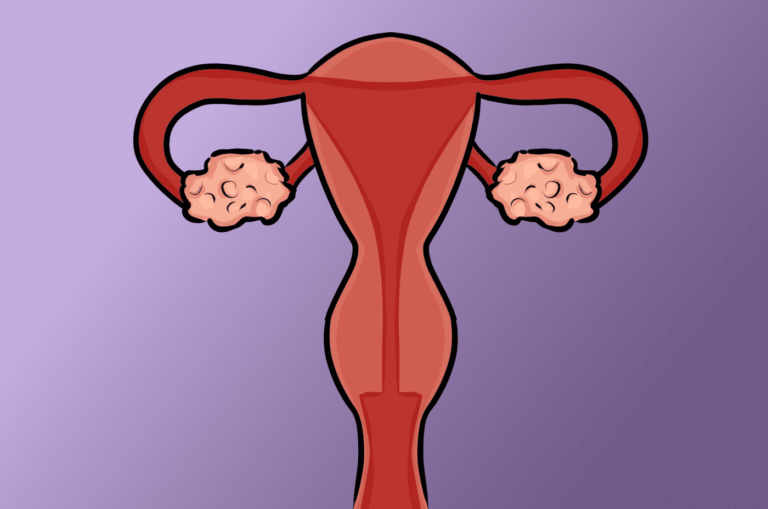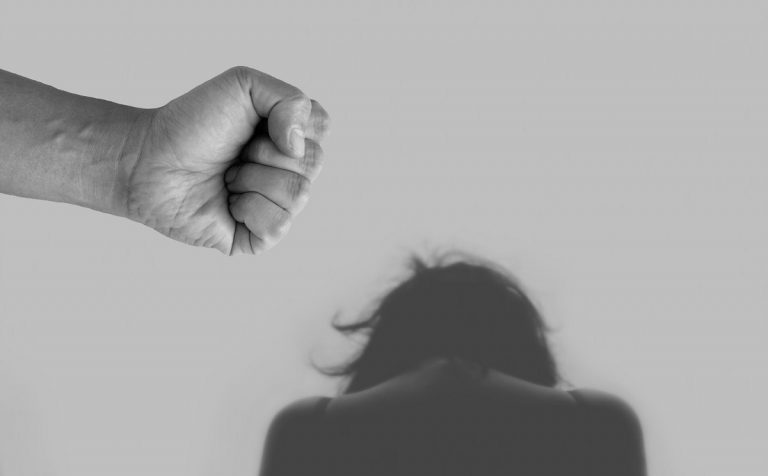Of lockdown, domestic abuse, patriarchy, and women

Damni, a Student Activist, is currently pursuing her Masters in Political Science from Hindu College, Delhi University

[responsivevoice_button voice=”US English Female” buttontext=”Read out this Theel for me”]
A global pandemic has hit us all. But the intensity of its effects varies upon the already existing hierarchies of society which marked the pre-pandemic times. The vulnerable have been pushed to extreme edges of marginalisation. Lockdown as a safety measure has resulted in a lockdown of rights, justice and resources for the disadvantaged sections of people. For half the world, the meaning of a lockdown is completely different from the assumed purpose behind it.
The pandemic has reached our doors, but the gruesome reality ‘behind the doors’ remains unchecked. Being locked at home has meant multiple layers of oppression for a huge section of women. Patricia Uberoi rightly said that “family is also a site of exploitation and violence”. But familial relationships are not subjected to scrutiny since they are considered as ‘sacred’ and hence unquestionable. The zone of the ‘domestic’ considered to be comforting and peaceful is also marked by severe violence which is not only limited to physical injuries. Govind Kelkar situates violence against women “in the socio-economic and political context of power relations”. According to her, to see violence as “an act of criminal use of force” is inadequate and hence should include “exploitation, discrimination, upholding of unequal economic and social structures, the creation of an atmosphere of terror, threat or reprisal and forms of religio-cultural and political violence”.
A global lockdown has led to an exponentially high number of cases of domestic abuse at both the national and international level.
Rise in domestic abuse amidst Global COVID lockdown
The COVID lockdown across the world has turned into captivity for a huge section of women as they are now locked down 24*7 with their abuser. The extremity of the situation can be mapped by considering global level statistics which include only physical injuries. According to UNFPA, for every three months, the lockdown continues, an additional 15 million extra cases of gender-based violence are expected. The UN has declared it a “shadow pandemic” taking place alongside lockdown.
On 6th April 2020, UN General Secretary Antonio Guterres called for a ‘ceasefire’ to address the ‘horrifying global surge in domestic abuse’. In a situation where women are threatened of even greater abuse on reporting, the helplines received a consistently high number of calls marking an increase when compared to the non- pandemic times. There have been an increase in calls by more than 33% and 30% in Singapore and Cyprus respectively. In France, cases of domestic abuse have increased by more than 30%. The cruelty and danger of reporting are so extreme that in France and Spain, a code word called “MASK – 19” has been developed to inform the nearby pharmacists about the domestic abuse who further contacts the authorities.
The case of India
The story of domestic abuse in India is present with greater brutality. It is multi-layered and takes several forms while depending upon the intersectionality of the woman’s position. Jaya Valenkar, from Jagori- a women’s rights organisation, says, “If a woman has to complain or seek help from a helpline about her family being abusive, she needs to have a landline or mobile phone while being 100% sure that she is not being overheard”. With almost 57% of women in India not having access to phones, their options for registering a complaint during a lockdown is now limited. Despite this, the National Commission for Women in India has recorded more than twofold rise in gender-based violence amidst the lockdown.
Apart from physical violence, several other mechanisms operate through which a woman’s personality and self – respect is harmed. Taking forward the argument of Govind Kelkar, let’s locate those areas. Women are subjected and confined to their ‘roles’ and ‘obligations’ systematically. Studies by Ranjana Kumari (1989) and Basu (1989) have shown that women are far less privileged than boys in access to material resources ranging from something as basic as food, health and requirements for education.
Diet and health of women amidst the pandemic
Sunita Kishor found that “a critical manifestation of discrimination” against the girl- children are the “under allocation of medicine and food”. Women because of cultural taboos eat less and after men ( Kumari 1990). With a set of such patriarchal norms, malnutrition is entrenched deeply in India. India was ranked 102nd out of 117 countries in the Global Hunger Index 2019. The hunger crisis has escalated more as a result of the lockdown, hence having a direct and disproportionate effect on women.
Food scarcity amidst COVID along with patriarchal notions doubly affects her dietary nutrition, health, both mental and physical. Further, her deteriorated health is neglected, and she’s expected to keep herself fine enough to do domestic labour and care work. Dandekar (1975) showed that women are less likely to be medically treated or if they are, then less is spent on her ailments. This happens because of factors extending beyond scarcity. The pandemic with restricted mobility would mean a negligible rate of women being taken to hospitals for treatment.
Online education and its impact on female students
The ratio of female to male students in education was already unequal. This is increasingly becoming lopsided with the online mode of education being pushed forward by the governments. Online education is exclusionary in a country where the digital divide is deeply based on caste, gender, class and region.
The UNICEF report of 2017 mentioned that only 29% of users are females in India. Digital India ignores the gender gap in society. Lack of internet facility is one of the many reasons why online education is not inclusive. But even if women students who have access to some amount of internet remain unable to access online classes due to unequal burden of work at home often clashing with household chores. Women using mobile phones constantly for hours is still considered a ‘taboo’ in society and looked with suspicion. It was not long back that panchayats banned phones from being used by girls going to colleges in areas of rural India. There is what I see as an ‘undeclared timing’ till which she can use phones or laptops. Her mind remains preoccupied with thoughts regarding what would family members assume if she sticks to that phone even for studying.
Virginia Woolf once talked about “a room of one’s own” for women to devote themselves to academics. This room of one’s own is still a far fetched dream in our patriarchal society. Female students under lockdown can concentrate on online classes only with great difficulty due to constant control and surveillance exercised over her and her ‘space’ including the tool she’s using for classes. Hence, internet access is necessary but not sufficient in ensuring if women can utilise it to its potential.
Along with technical aspects, one needs to work on the socio-cultural roots of patriarchy to reduce the gender gap of “Digital India”. Unless this is done, the very tools of empowerment through education could be used against her for surveillance, control and taking away the opportunity to complete her education. Online mode of education in stressful conditions of home and restricted mobility results in a restricted zone of creative self – expression for women students.
Economy amidst pandemic and its impact on women
The economy in a patriarchal society will always be marked by a sexual division of labour. Women are allotted work which is considered less- valuable and sometimes not even considered as work and is seen a part of her responsibility of being a woman. The pandemic has increased her “unpaid family work”. Years ago, Simone De Beauvoir rightly located women’s subordination as a result of her preoccupation with household work.
Even when women go out to work, the pay scale for their labour is less when compared to men, hence increasing their dependency on male members. But even apart from financial reasons, her basic access to resources, mobility and choices are screened by the male authority.
The COVID rules of distancing will be used as precautions for a considerable amount of time after the pandemic as well. Informal sectors where women work the most will find it difficult to manage this. In 2004-05, of the 148 million women workers in the Indian economy, 142 million that is 96% of women were a part of the unorganised sector.
Several states like UP, Madhya Pradesh and others have abandoned labour laws to attract investment. For instance, in Uttar Pradesh itself only three labour laws are functioning now, none of which includes any labour law for women. This will force women to give up issues of health, maternity and keep their lives at stake to make their ends meet by working in poor conditions, low wages and without any protective legislation.
Intersectionality of the woman’s question
War, disaster and pandemics render the biggest of travesty on women. This should be the time when the already marginalised sections are given priority in the management of COVID. Unfortunately, they have been neglected by the society as well as state to the extent that something as important as sanitary napkins were kept out of the list of essential services when the lockdown began.
Women are bearing the direct brunt of the pandemic, and it’s ripple effects on social, economic and educational fronts. This has to be multiplied further by their location in the social hierarchy not only as women but also on the basis of caste, class, region. For instance, NFHS records across the years have shown that the prevalence of violence against Dalit and Adivasi women have been much higher than those who do not fall in this category. Blatant caste violence and untouchability rose amidst the lockdown. Communal polarisation deeply impacts the situation of Muslim women. Kashmiri women students are still unable to complete their education due to a 2G internet speed after facing the biggest shutdown in the world. COVID once again increased racist attacks and reports have shown how women students from north-east were humiliated.
The pandemic can be managed only by considering the social- economic- political factors as a part of an active agenda of the state to tackle the crisis. This requires policy interventions specifically for women and others who are marginalised. Temporary changes for quick redressal in the cases of domestic abuse can give some relief. The perpetrators of violence should be warned to instil a fear of punishment. The government policies should specifically increase the amount of money or other resources for women. Along with this, the sensitivity of language on the part of the government and administration can help fight the roots of patriarchy.
Featured Image Credits: Wikimedia
References
- Uberoi, Patricia. “The Family in Official Discourse.” India International Centre Quarterly 23, no. ¾ (1996): 134-55. Accessed June 24, 2020. www.jstor.org/stable/23004616.
- Karlekar, Malavika, “ Breaking the Silence”, in, Kullar, Mala. “ Writing the Women’s Movement: A Reader” (2005)
- Karlekar, Malavika. “Domestic Violence.” Economic and Political Weekly 33, no. 27 (1998): 1741-751. Accessed June 23, 2020. www.jstor.org/stable/4406963.
- Swaminathan, Padmini. “Outside the Realm of Protective Labour Legislation: Saga of Unpaid Labour in India.” Economic and Political Weekly 44, no. 44 (2009): 80-87. Accessed June 26, 2020. www.jstor.org/stable/25663737.








